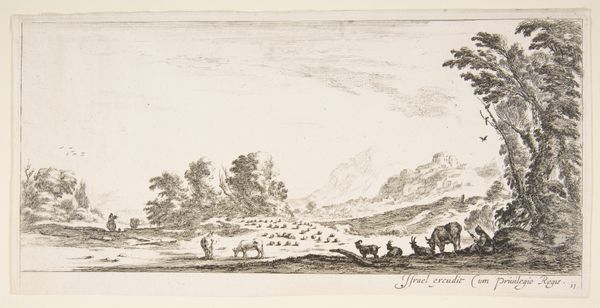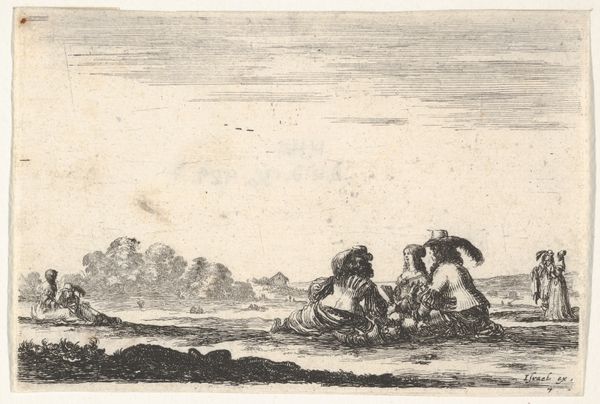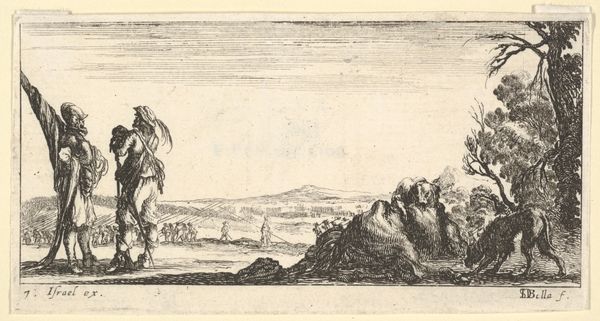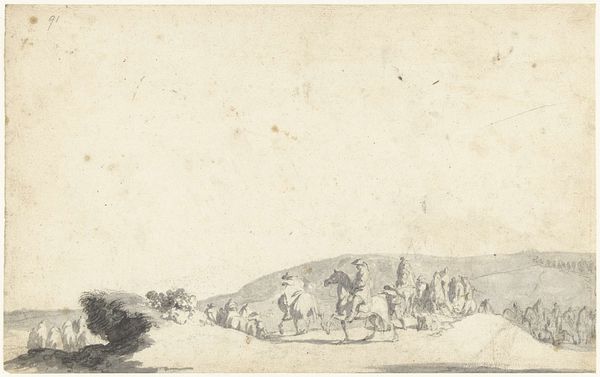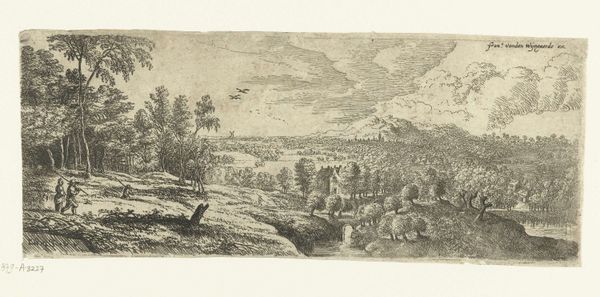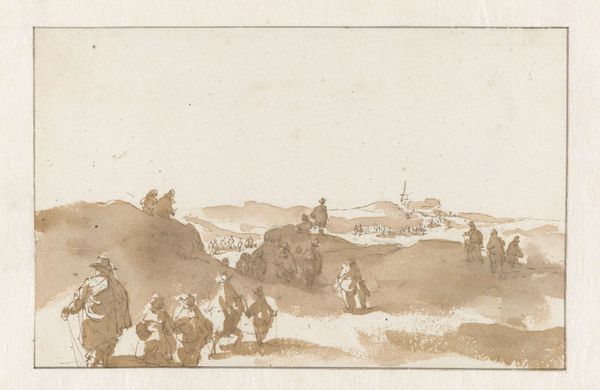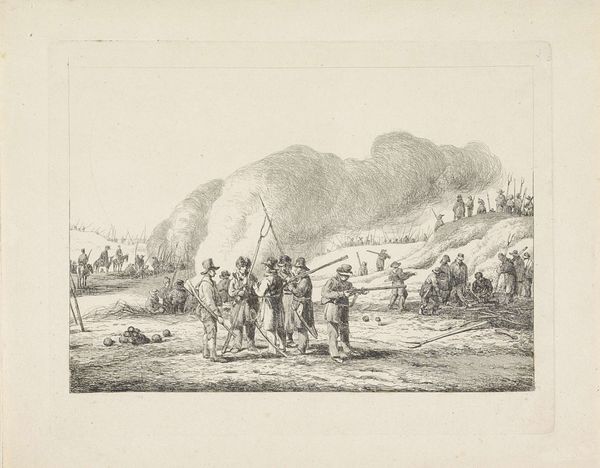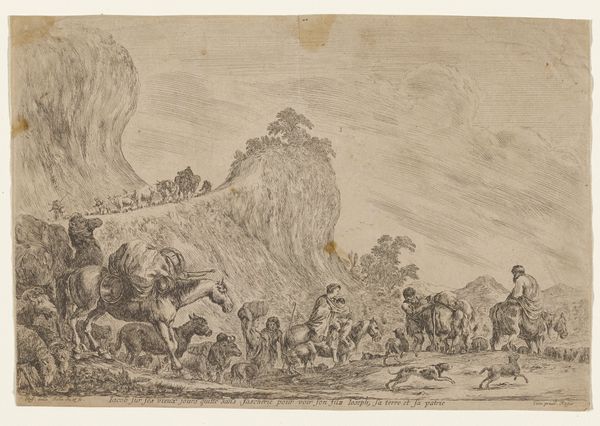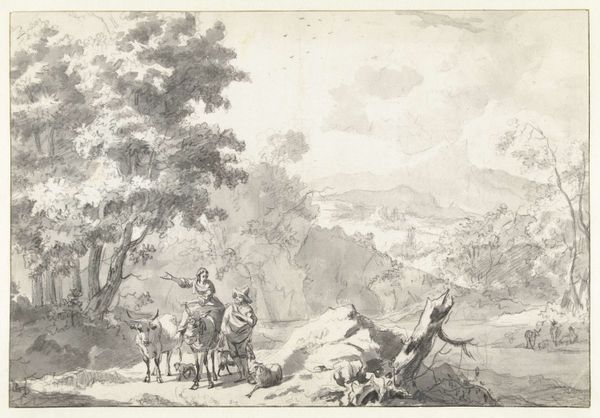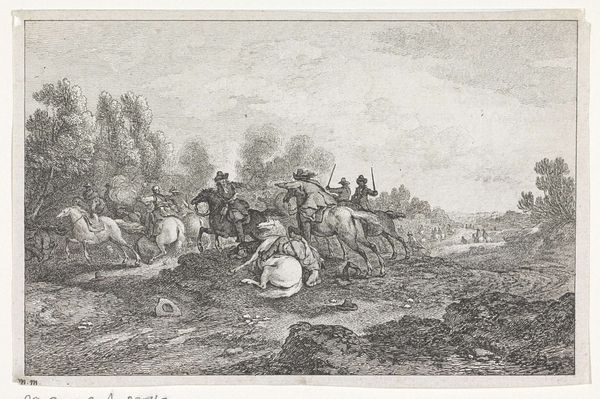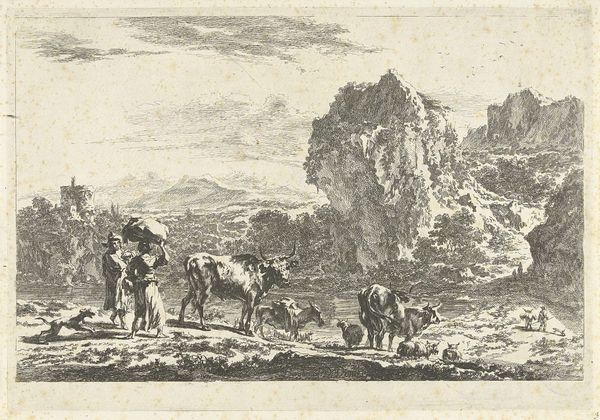
print, etching
#
narrative-art
#
baroque
#
dutch-golden-age
# print
#
etching
#
landscape
#
figuration
#
line
#
genre-painting
Dimensions: height 97 mm, width 172 mm
Copyright: Rijks Museum: Open Domain
Curator: Ah, here we have "Herder met geiten en schapen bij een rivier," or "Shepherd with Goats and Sheep by a River." It’s an etching, created sometime between 1610 and 1650, a testament to Dutch Golden Age landscapes and currently residing here at the Rijksmuseum. Editor: It has a striking melancholic simplicity to it, wouldn’t you say? The figures are minimal, almost silhouetted, emphasizing a quiet observation of daily pastoral life, likely by someone from that world. Curator: The river is undoubtedly a key compositional element. The figures are placed beside the water to create a sense of serenity. In Christian art rivers often function as symbols of purity and life itself. Does it evoke anything in you? Editor: Well, given that this print circulated – perhaps widely – we might think of how such imagery normalized agricultural life for increasingly urban consumers. Did access to printed material impact our sense of work as physical labor and class? Curator: Perhaps! One could explore that angle. Etchings themselves are such democratic tools; the relative ease and reproducibility of the medium allowed for the dissemination of artistic ideas far beyond the elite circles who commissioned oil paintings. And yet, an element of the maker is present in every individual print. Editor: I am interested in this concept of maker presence in printed works. It challenges this idea of artistic genius. Can we explore the chemical processes involved in this creation? Are there social hierarchies of labour embedded even here, within this reproducible format? Curator: That's a crucial observation; while printmaking fostered wider distribution, the etching process required skilled artisans to create the plates. Those anonymous hands shaped these artworks just as significantly as the artist's design did. Perhaps even the ink types or the paper texture point us to networks of global trade and the consumption of this imagery. Editor: Exactly! So, looking again, I'm less taken by that supposed quiet observation and more curious about the distribution, labour conditions, and the paper’s physical journey that enabled its survival. Curator: It's fascinating to consider it in terms of circulation and labor. Editor: Yes. It compels us to see beyond the picturesque, recognizing how the image is tethered to the socio-economic world from which it emerged.
Comments
No comments
Be the first to comment and join the conversation on the ultimate creative platform.

